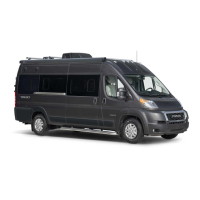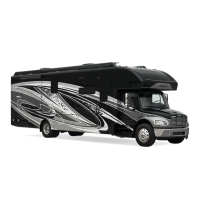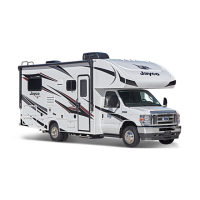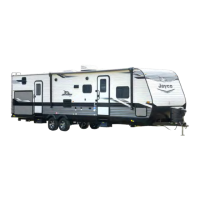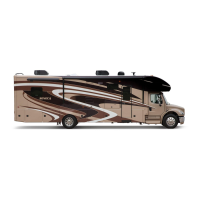89
Cleaning The Exterior
To protect your recreation vehicle’s exterior nish, wash it often and thoroughly. You may
wash and wax your new recreation vehicle 60 days after purchase. The exterior paint needs
time to cure before any wax is applied to the exterior surface. Careful maintenance for the
rst 60 days will assure a long lasting durable nish.
Your RV is exposed to many environmental conditions that have an adverse aect on the
paint nish:
Road Salt and Sodium Chloride
Road Tar / Bugs
Bird Droppings / Tree Sap
Industrial Fallout / Acid Rain/Pollution
UV Exposure and Moisture
The most common problems resulting from these conditions are corrosion, staining, and
chemical spotting. Generally, the longer the foreign material remains in contact with the
exterior nish the more extensive the damage. These problems can be minimized by regu-
larly scheduled washing and polishing. Wash your recreation vehicle as soon as possible if
it becomes contaminated with foreign material.
Avoid parking under trees or near ocean sea salt. Ice or snow should be brushed o, not
scraped, from the painted surface. Avoid gravel roads.
Anti-freeze, gasoline or washer solvents if spilled on the painted surface should be rinsed o
with water immediately. Bugs and bird droppings should be rinsed o daily.
Commercial washing should be avoided. Wash with cold water using a mild liquid soap.
Dry wiping with a dry cloth is not recommended.
Make sure the RV’s surface temperature is cool, under 90 F, and out of direct sunlight. A
shaded area is ideal for washing your vehicle as direct sunlight causes water spotting. Use a
mild soap, detergent or car wash shampoo. Try to avoid combination wash-n-wax products
as these waxes can cause build up and are designed for smaller surfaces. Have two dedicated
sponges or wash mitts: one for the paint nish and one for the wheels and under carriage.
Brushes or wash mitts made of plastic bristles are acceptable for use on tires and wheel
wells, but are not intended for use on the paint nish. Avoid using such items on painted sur-
faces as they will damage the nish. Wash the wheels and wheel wells rst as this removes
heavy dirt and debris and prevents it from splattering on panels. Wet the entire area down to
remove loose dirt and grime, then hand wash one area at a time using your dedicated paint
nish sponge or wash mitt. Wash from the top and work your way down, rinsing frequently
to minimize grit abrasion. Follow with a nal rinse of water. This process will remove most
contamination from the RV’s surface.
For stubborn stains such as road tar or bug stains, use an ammonia based glass cleaner or
a small amount of rubbing alcohol on a damp cloth followed immediately by warm soapy
water, and rinse with clean water. This may not dissolve the road tar, but it will loosen tar
and bug stains and remove them from the surface.
Do not use solvent based cleaners on bird droppings or tree sap as these are water based
stains. They can be dissolved using ammonia based glass cleaner, warm soapy water and a
little “elbow grease”. After removing stubborn stains immediately rinse with clean water.
Drying the RV is just as important as washing it. Tap water and well water contain many
chemicals that could water stain your RV’s nish.
We suggest using a damp natural or synthetic chamois. There are other drying products such
as lint-free micro-ber towels that work just as well.
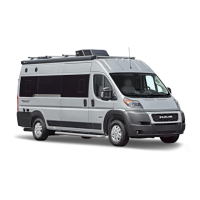
